Portals, Stories, and Other Journeys
Expanding the possibilities of the archive with artistic responses to the late Hong Kong–based artist Ha Bik Chuen’s personal archive.
The exhibition Portals, Stories, and Other Journeys stems from Asia Art Archive’s research since 2014 into the personal archive of the late Hong Kong–based artist Ha Bik Chuen (1925–2009). A self-taught sculptor and printmaker, Ha left behind a extensive personal archive. He documented exhibitions that he attended from the 1960s till the 2000s, and kept records in the form of ephemera, negatives, contact sheets, and photo albums. He also collected printed matter such as illustrated magazines, and created book collages from these publications. His library contained books on art and visual culture from far beyond the port city of Hong Kong. Portals, Stories, and Other Journeys does not only consider the contents of Ha’s archive, but the way in which he approached archiving and how it influenced his creative practice. This proposes a slippery division between collecting, documenting and artwork. The curator for the show, Michelle Wong, invited artists to respond to Ha’s archive, stretching the possibilities of archival work. In this interview Wong shares details about the research on Ha Bik Chuen and the conceptualisation of the exhibition.
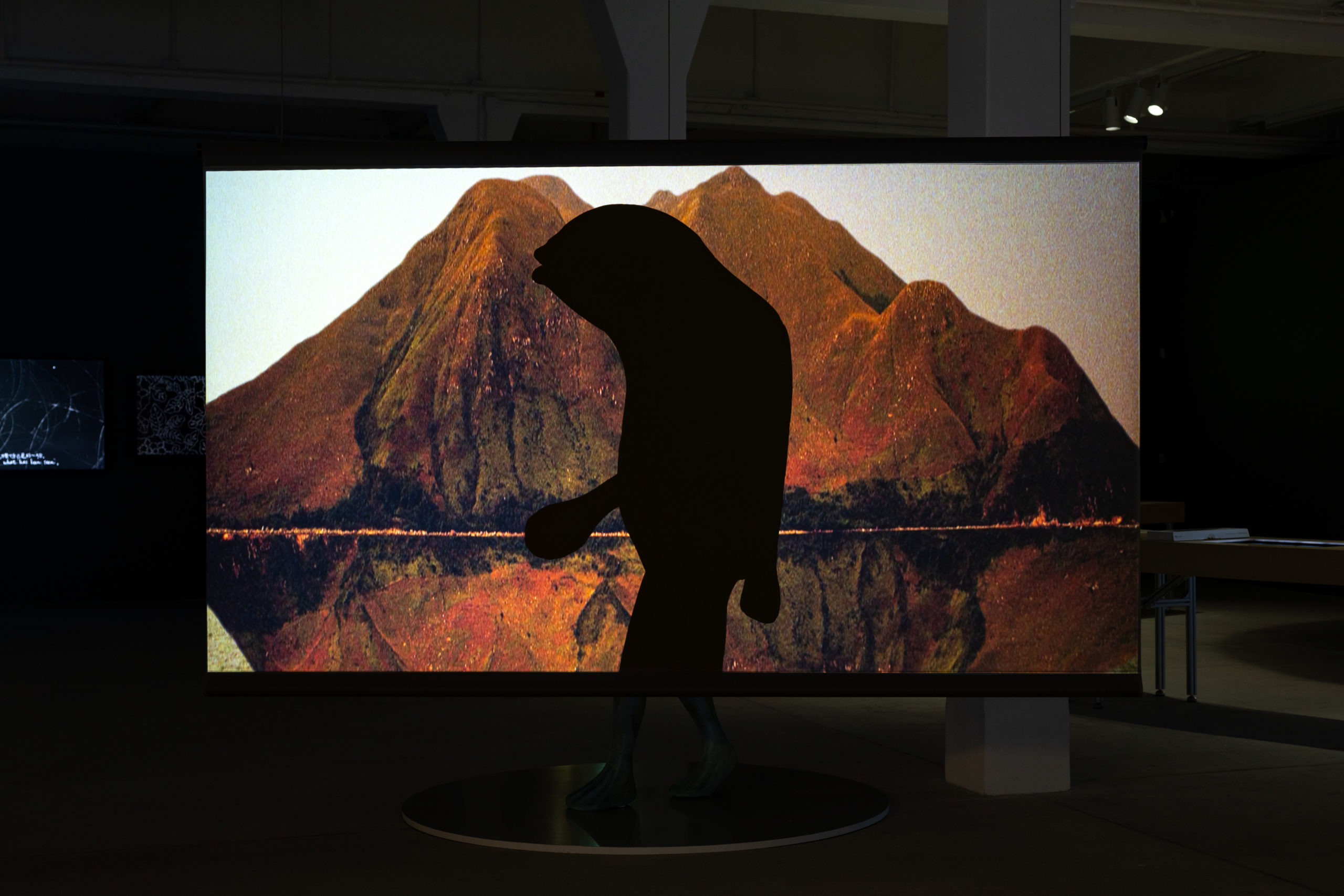
A Shadow Play, installation view of Portals, Stories, and Other Journeys, Tai Kwun Contemporary, 2021. Photo: Kwan Sheung Chi.
《影子戲》,《咫尺之內,開始之前:隨意門及其他足跡》展覽現場,大館當代美術館,2021年。關尚智攝。
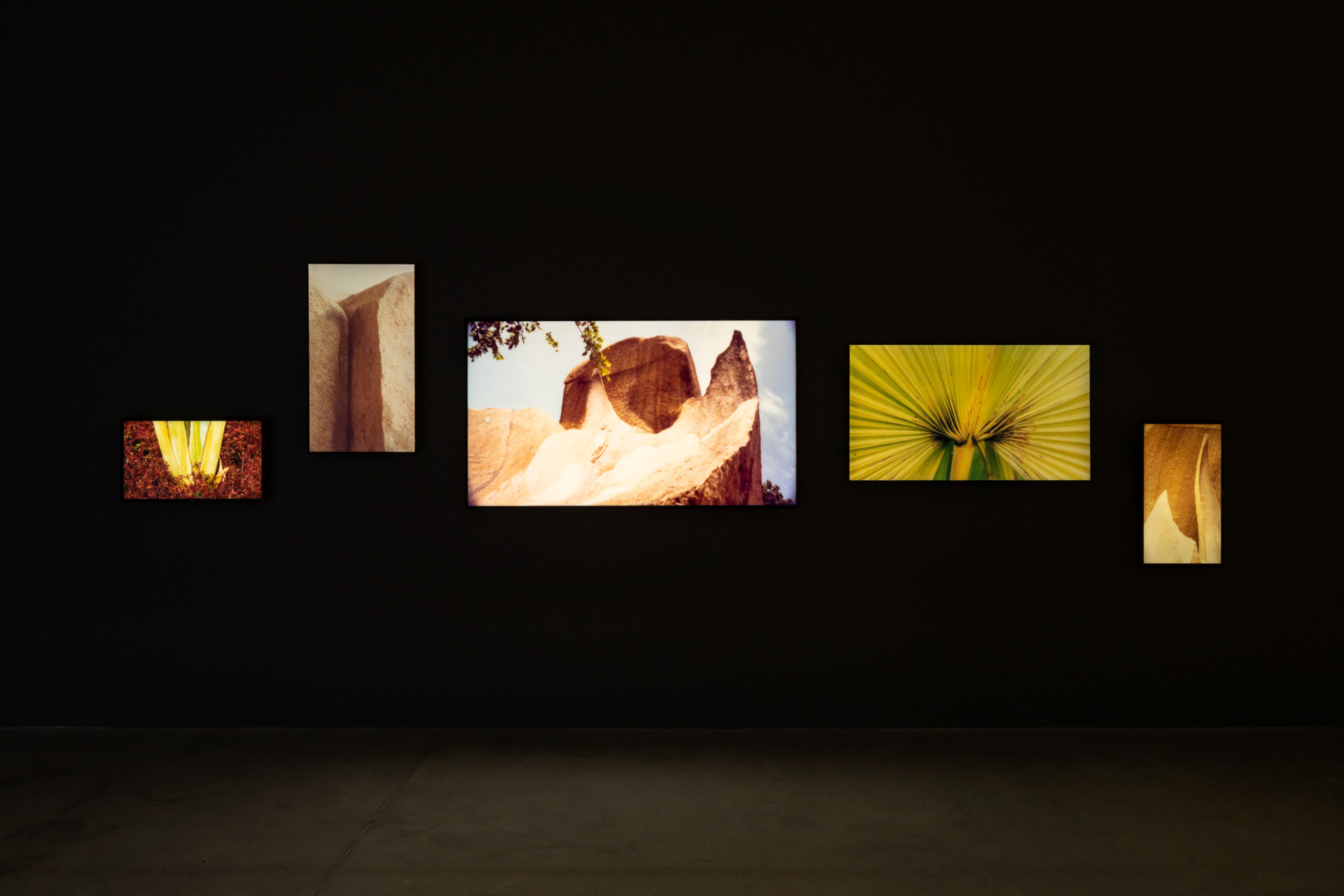
Lam Wing Sze, Thinking Studio, 2020. Installation view of Portals, Stories, and Other Journeys, Tai Kwun Contemporary, 2021. Photo: Kwan Sheung Chi.
林穎詩,《思考工作室》,2020年。於《咫尺之內,開始之前:隨意門及其他足跡》展覽現場,大館當代美術館,2021年。關尚智攝。
SOUTH SOUTH (SS): Could you please share more about your journey within the art world and your own creative practice?
Michelle Wong (MW): I meandered into art history, and by extension the art world in some ways, by way of music (the cello, and occasionally, the typewriter), and the history of electronic music. Working at Asia Art Archive from 2012 to 2020 has been an important period for me, through which I research by practice of organising materials, conducting oral history interviews, and being immersed in conversations with practitioners – artists, curators, scholars alike. In 2015, I joined the curatorial team of the 2016 edition of Gwangju Biennale, and it was through that experience that I was pushed to articulate various positions and thoughts around archives, the curatorial, artists and artworks living and dead. After that I started other projects with friends who are artists, makers, writers, and conversationalists. Some of these projects explore how we see and inhabit the world, some of them are around how we tell stories to and with one another. The forms they take are sometimes unpredictable, but I usually find myself returning to writing and conversations. And throughout the years I have enjoyed many many hours of conversations with practitioners, and they often make way for things I do and write.
SS: The exhibition Portals, Stories, and Other Journeys is the result of research since 2014 into the personal archive of the late Hong Kong-based artist Ha Bik Chuen (1925–2009). Could you share more about his work and the significance of animating his archive in this form?
MW: Ha was an artist who moved to Hong Kong from Guangdong via Macau in 1957. He made prints and sculptures with a collage sensibility that combined found materials, and took a copious amount of photographs of things, people and events. As an artist who never received any academic training, one could say that the vast archive he left behind after his death was an instrumental tool of self-learning. Six years after his death in 2009, Asia Art Archive (AAA) started working on his archive at the Ha family’s invitation, focusing on the exhibition histories that Ha documented through his photo documentation and collection of printed matter.
My understanding of Ha changed though, when the artist Walid Raad came to AAA as an artist-in-residence, and he discovered the collage books that Ha made but never showed in public. Ha would insert images from different time periods and disciplines, sometimes they are art images, and sometimes they are not. It was as if he was re-writing art history through his collage pages. To date there are over 300 of these collage books found in Ha’s collection, dating from 1958, the year after he arrived in Hong Kong, to 2009, the year he passed away. It still amazes me how these collage books hid in plain sight inside Ha’s studio even though we were working in it so much.
Those of us who were working at AAA at the time had missed these collage books because we were somewhat too preoccupied with looking for the exhibition histories in Ha’s archive. And we had forgotten that when an artist makes archiving his/her practice, it necessarily has to exceed linear history. I guess our preoccupation with gathering a chronological history of exhibition histories through Ha’s materials put us in a blind spot somewhat. This story is therefore an important one because it is a constant reminder that things beyond our expectations often lurk in the archive, and an archive is never fully known. An exhibition allows the staging of discovery and unknown through the spatial, and it can guide us to explore our sense of scale, of self, and of history.
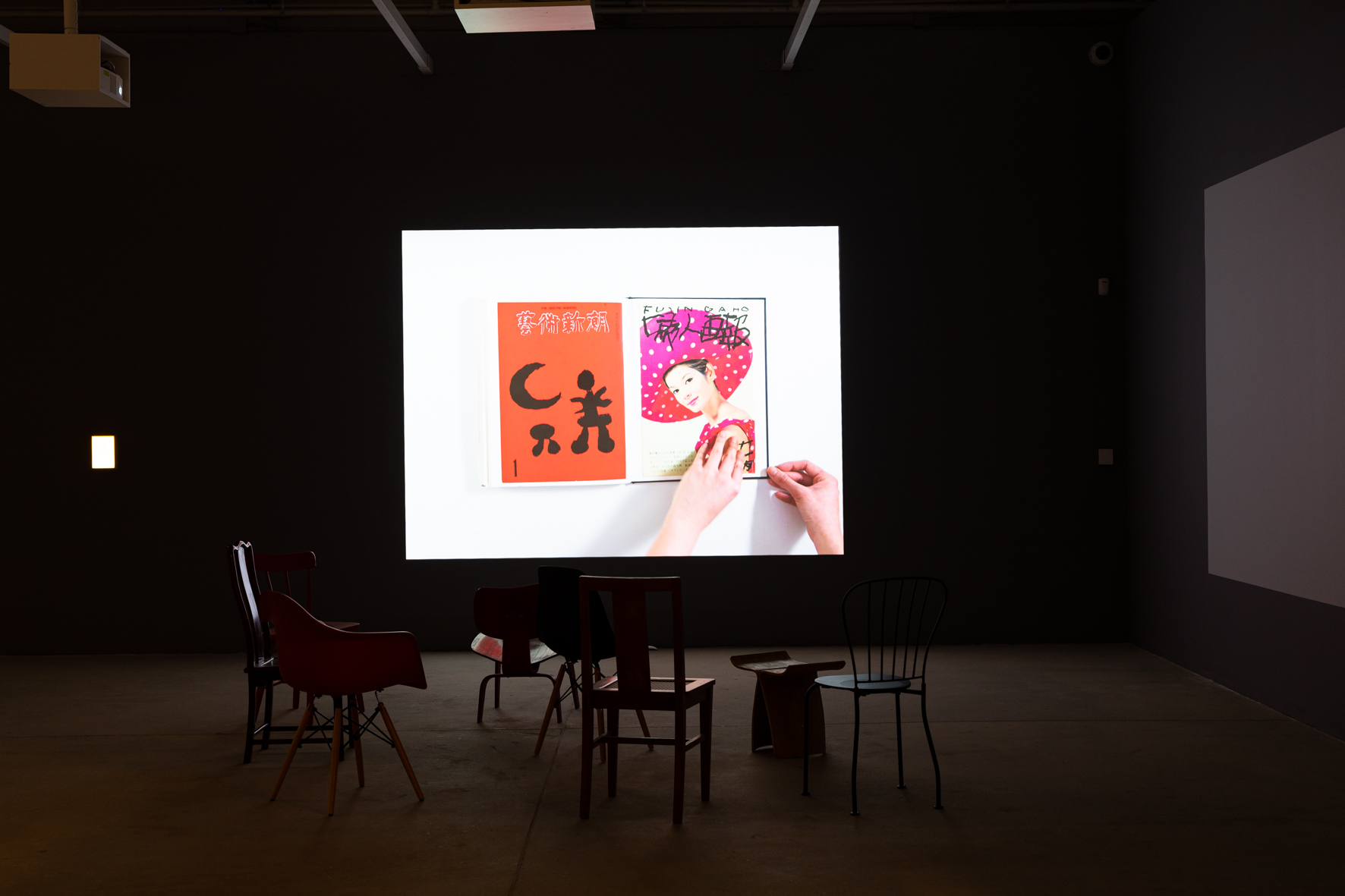
A Giant Flipbook, installation view of Portals, Stories, and Other Journeys, Tai Kwun Contemporary, 2021. Photo: Kwan Sheung Chi.
《巨型手翻書》,《咫尺之內,開始之前:隨意門及其他足跡》展覽,大館當代美術館,2021年。關尚智攝。
An exhibition allows the staging of
discovery and unknown through the spatial,
and it can guide us to explore
our sense of scale, of self,
and of history.
SS: An important part of this exhibition is not only thinking about what Ha chose for the contents of his archive but the way in which he approached archiving, inviting an interrogation of the dividers between collecting, documenting and artwork. What are your thoughts on this, and what have you discovered through your research?
MW: How the materials Ha left behind crosses divisions between collecting, documenting and art work is a fascination to many people. Time and again I return to the question of “What is an archive?” Or rather, when does a collection of stuff become an archive? Does it become an Archive with a big A when an institution starts calling it one?
Ha’s own way of working with his collection seems to toggle between archive and stuff – sometimes the materials would fit neatly in boxes and categories, sometimes they just let loose and invent places they belong to and don’t belong to. This has become more and more intriguing to me and I find myself drawn more to the nuanced subjectivity of Ha as a collector of stuff, and how that influenced his creative practices.
Those of us who have worked on and with Ha’s archive throughout the years often return to the topic of how our own subjectivities—creative and intellectual alike—have been shaped by the time we spent working on the materials, and working with the people who worked on them. For some time, some of us have been discussing what it means to be digesting an archive, to not only witness but also become part of its transformation. This way of thinking and practicing shifts my understanding of an archive to also consider the people that come into and out of our lives because of it, and the conversations that we share. They don’t make the archive expand per se, that would be too simple. Maybe it makes me more attentive towards how the archive plays an intimate role in our creative and intellectual lives. These experiences extend and morph, and before we even know it they already envelope us like a blanket.
SS: How has this long contemplation on Ha’s work (since 2014) influenced your curatorial considerations for the show?
MW: I think the time spent with Ha’s materials has made me consider a lot more how one could experience the vastness and complexities of his stuff. Strangely enough it made me push against a desire to put information out in only a straightforward manner; it drove me to meander and create an experience and condition where you bring people along. It makes me want to draw our attention towards the affective registers that one experiences when spending time with an archive that undergoes transformation. The exhibition’s dim lighting is also a way to point towards that affective register.
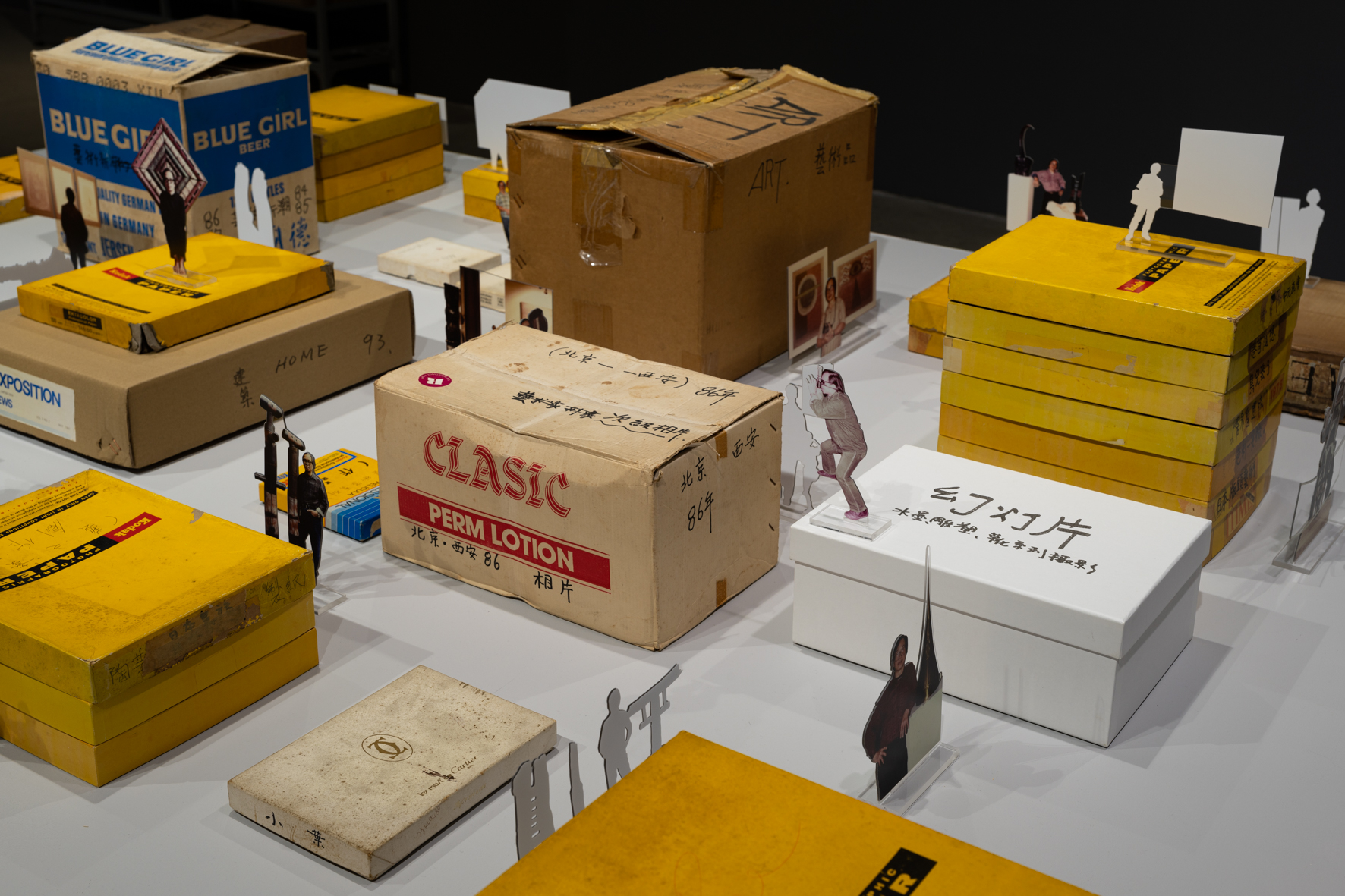
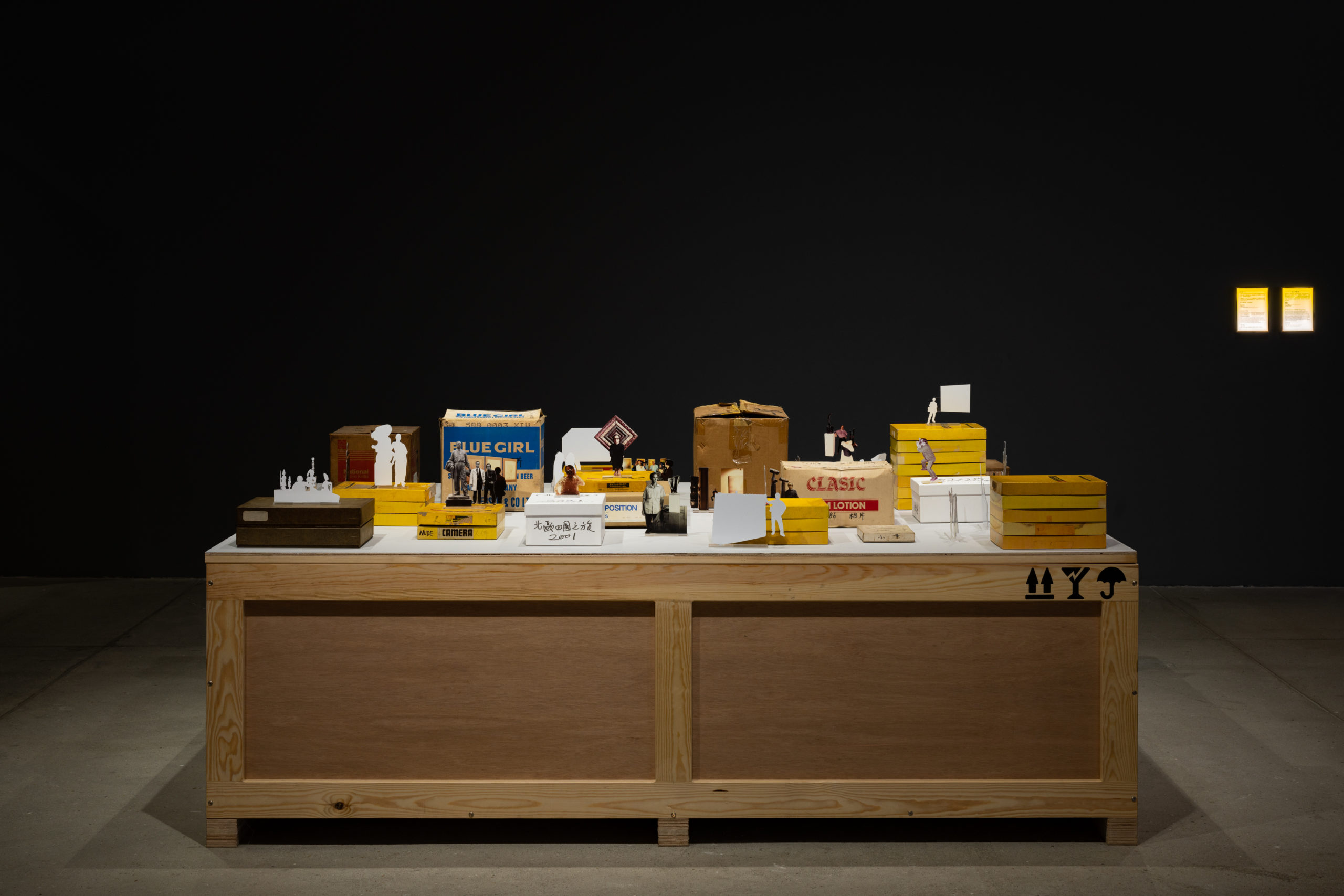
Walid Raad, Untitled #79, 2020. Installation views of Portals, Stories, and Other Journeys, Tai Kwun Contemporary, 2021. Photo: Kwan Sheung Chi.
Walid Raad,《無題#79》,2020年。於《咫尺之內,開始之前:隨意門及其他足跡》展覽現場,大館當代美術館,2021年。關尚智攝。
SS: The exhibition comprises ten “sets” that share what this archive can do—how it fuels practices of artists, and how it shapes and shifts our understanding of Hong Kong’s history and art. Could you share more about these “sets” and your thinking behind this way of engaging with the archive?
MW: The idea of “sets” comes as a desire to present moments of clarity as one navigates a vast sea of information. Sometimes things come into focus and you can see clearly how the archive, its contents and something that is external to it, whether it is people, another object, or a feeling, become linked and the condition for each other to exist.
You mentioned earlier that the exhibition invites visitors to consider Ha’s messy boundaries between collecting, documenting and art. Indeed, the “sets” allow us to bring this blurring into an experiential register. There are moments in the exhibition where a work of art’s meaning is changed because its display is informed by a piece of archival document. There are also instances where a figure in a photograph turns three dimensional, and other instances where pages become walls, and walls become pages.
SS: How does the title for the show assist in guiding and opening up audiences towards unpacking the archival and artistic practices as presented in the show?
MW: A friend who visited the exhibition said to me afterwards that she wished there were a destination after journeying through all that many portals in the show. I mulled over it for weeks, and thought, the pictures Ha collected, too, only seem to want to travel but with no arrival in mind.
The “sets” also make the visitors a protagonist—one walks into the set and completes it. Since you may not know what a set is set out to do, it can subvert the expectation of an exhibition, departing from an archive ought to present information. Sure, there is abundant information in this exhibition, but there are also many other forces, affect and discursivity at work, and the “sets” help bring out these contours.
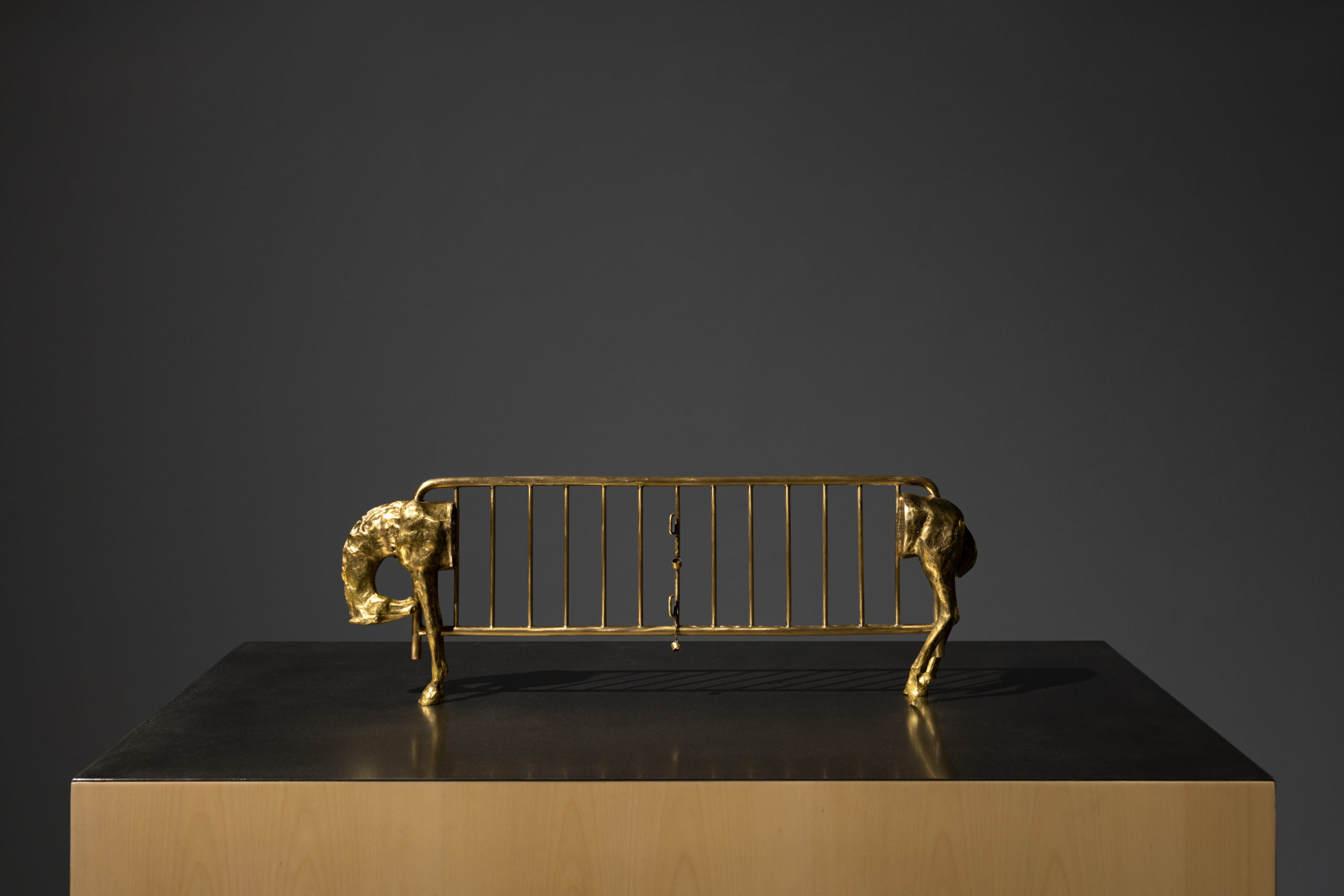
Kwan Sheung Chi, Iron Horse—After Antonio Mak, 2008/2020. Installation view of Portals, Stories, and Other Journeys, Tai Kwun Contemporary, 2021. Photo: Kwan Sheung Chi.
關尚智,《鐵馬——麥顯揚之後》,2008/2020年。於《咫尺之內,開始之前:隨意門及其他足跡》展覽現場,大館當代美術館,2021年。關尚智攝。
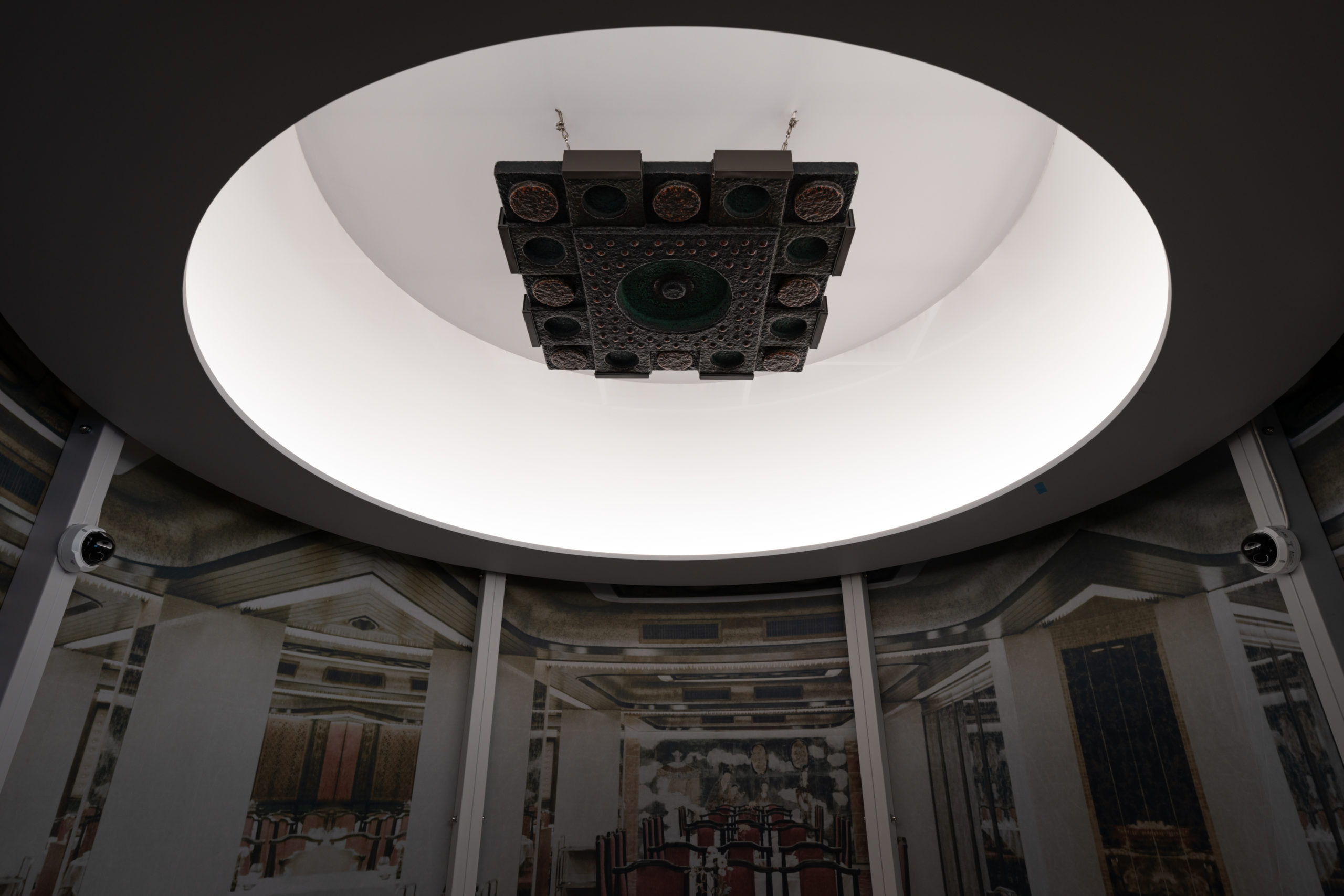
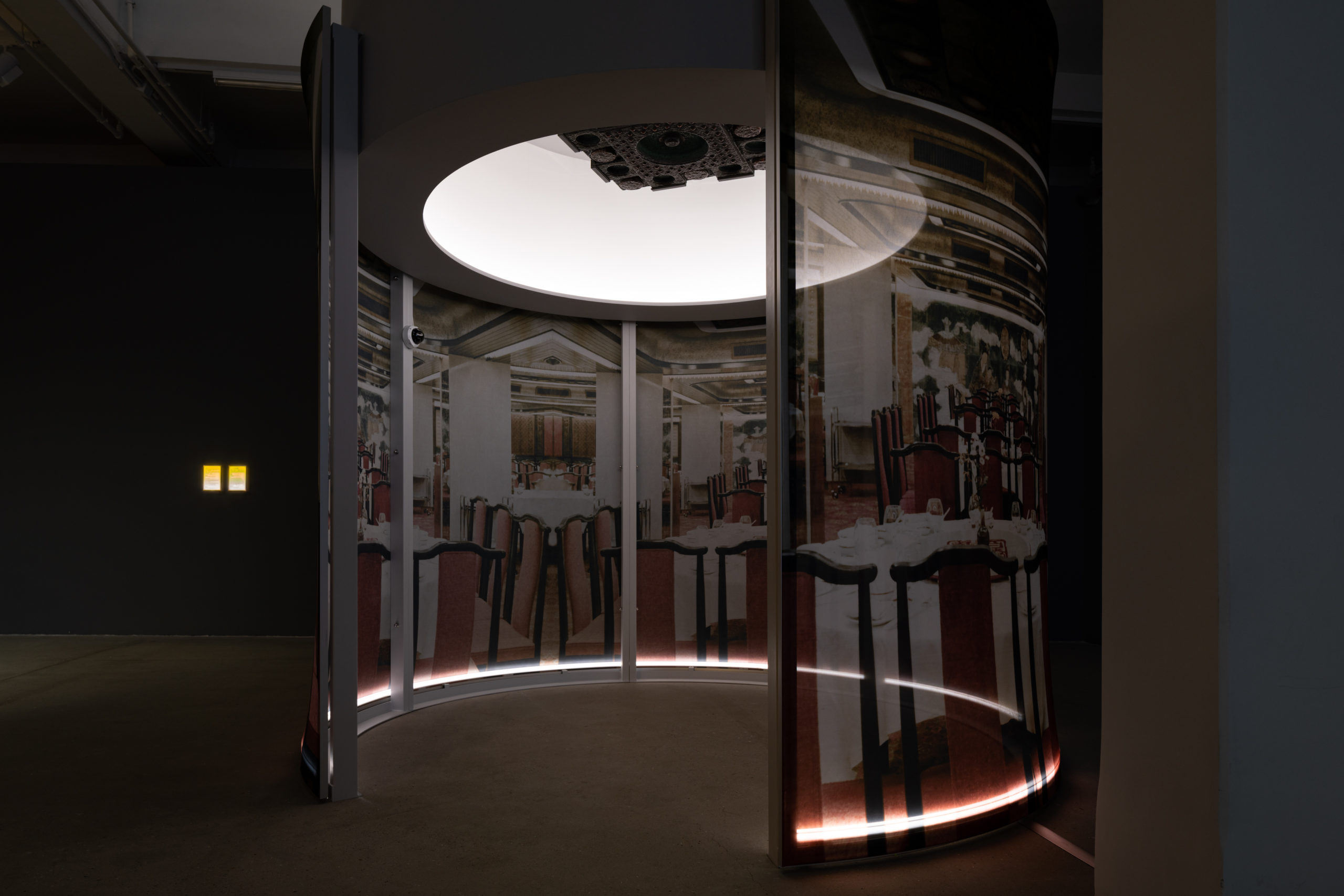
A Restaurant in 1970s Hong Kong, installation view of Portals, Stories, and Other Journeys, Tai Kwun Contemporary, 2021. Photo: Kwan Sheung Chi.
七十年代香港某餐廳,《咫尺之內,開始之前:隨意門及其他足跡》展覽現場,大館當代美術館,2021年。關尚智攝。
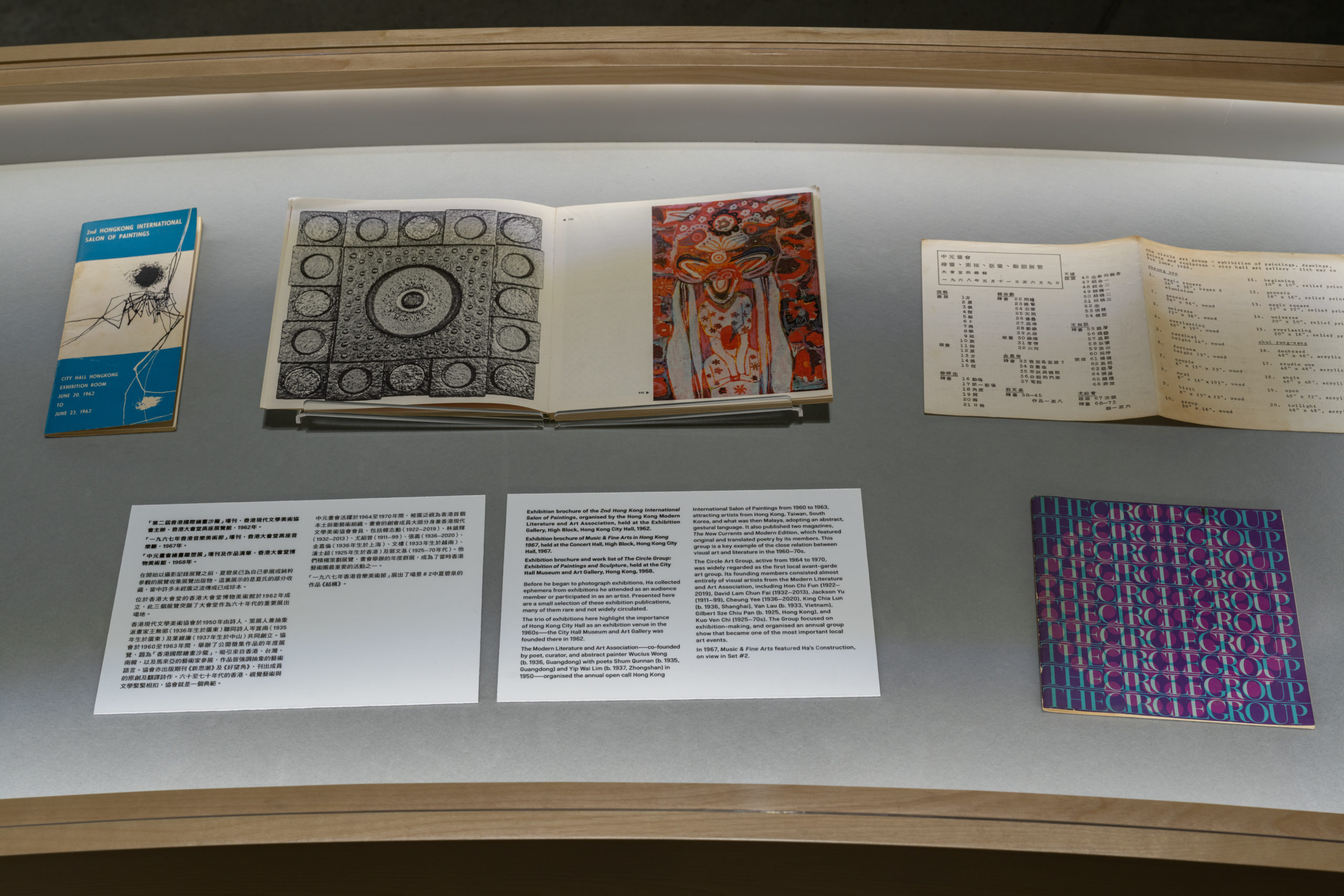
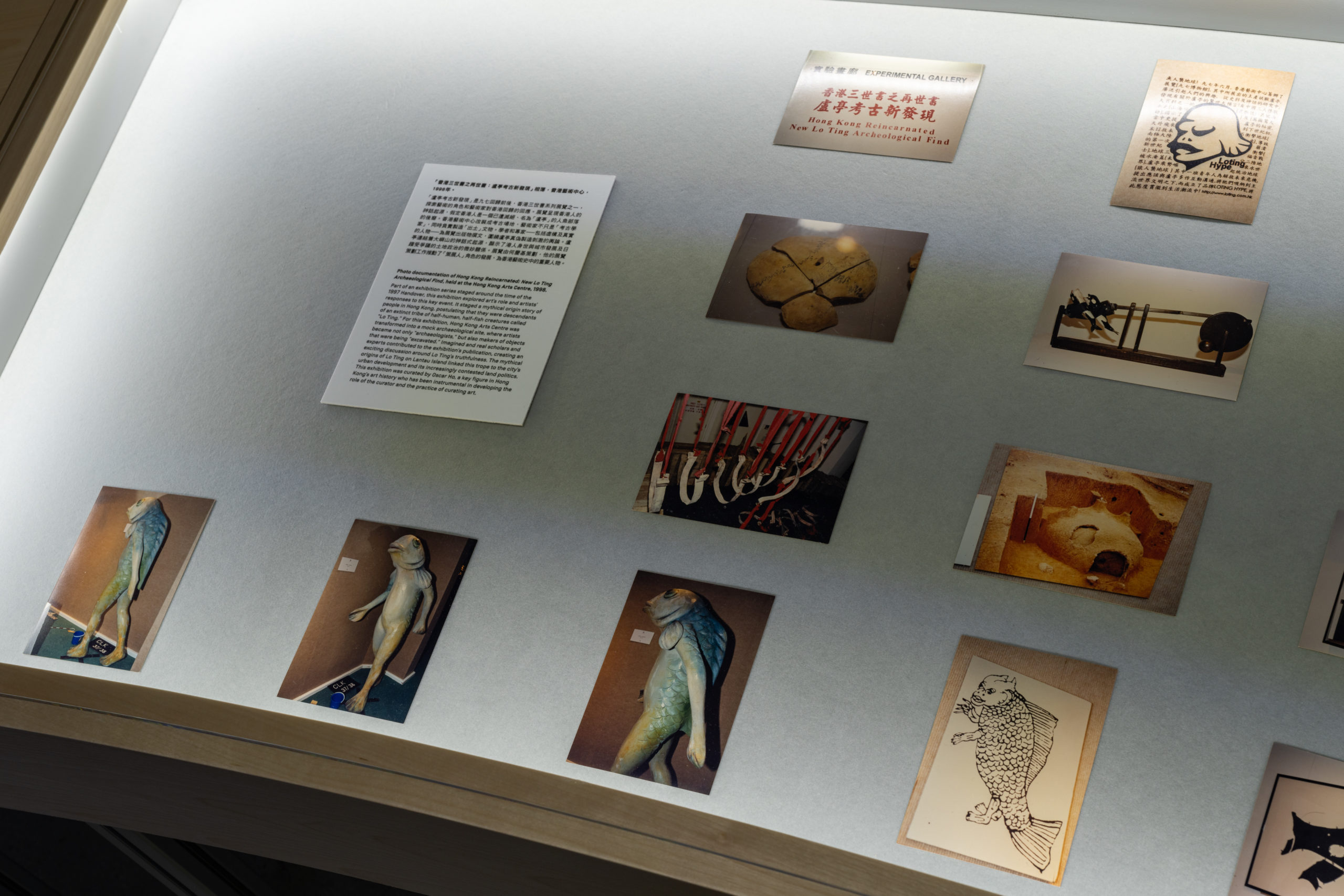
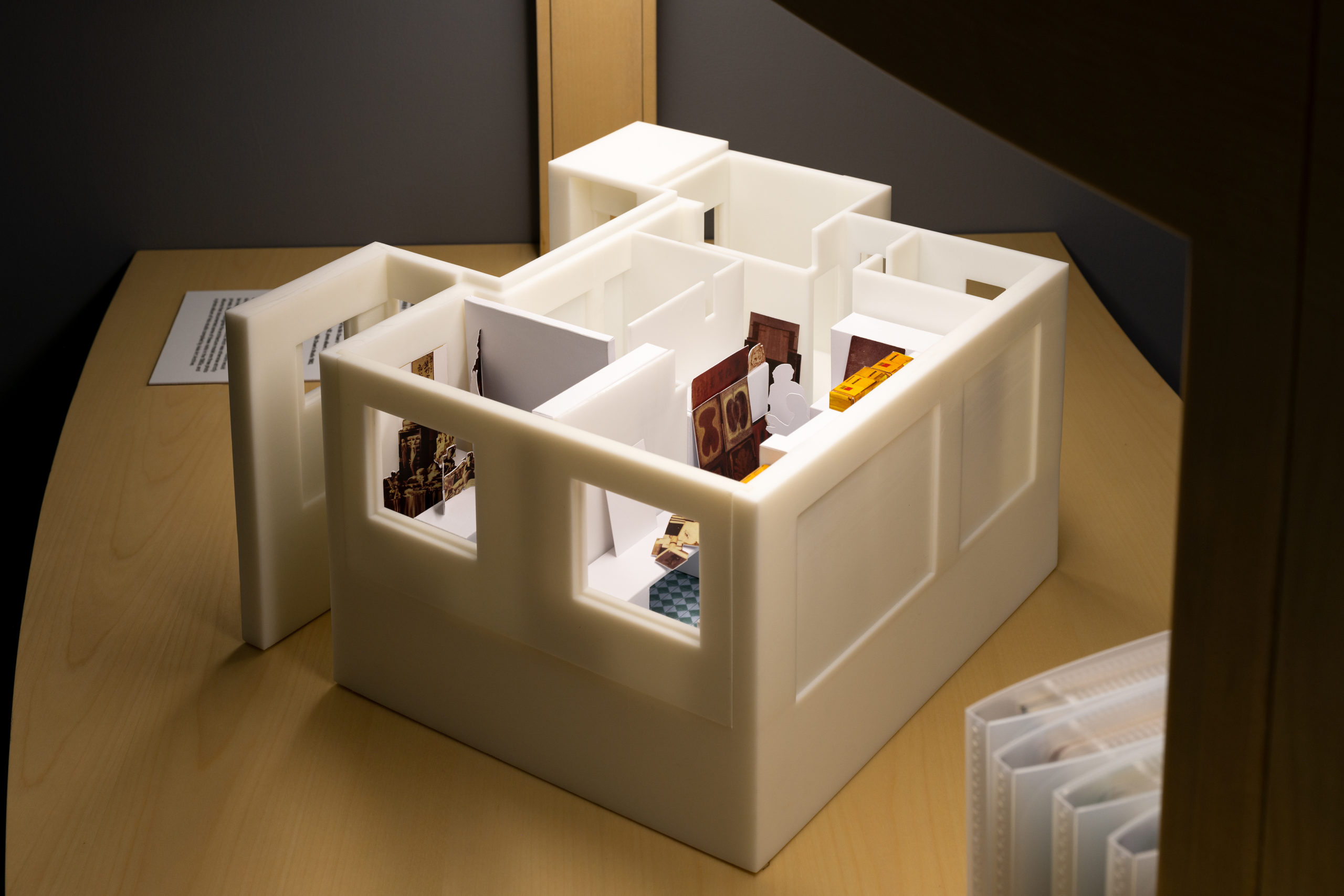
An Archivist’s Table, installation views of Portals, Stories, and Other Journeys, Tai Kwun Contemporary, 2021. Photo: Kwan Sheung Chi.
《檔案整理員的桌子》,《咫尺之內,開始之前:隨意門及其他足跡》展覽現場,大館當代美術館,2021年。關尚智攝。
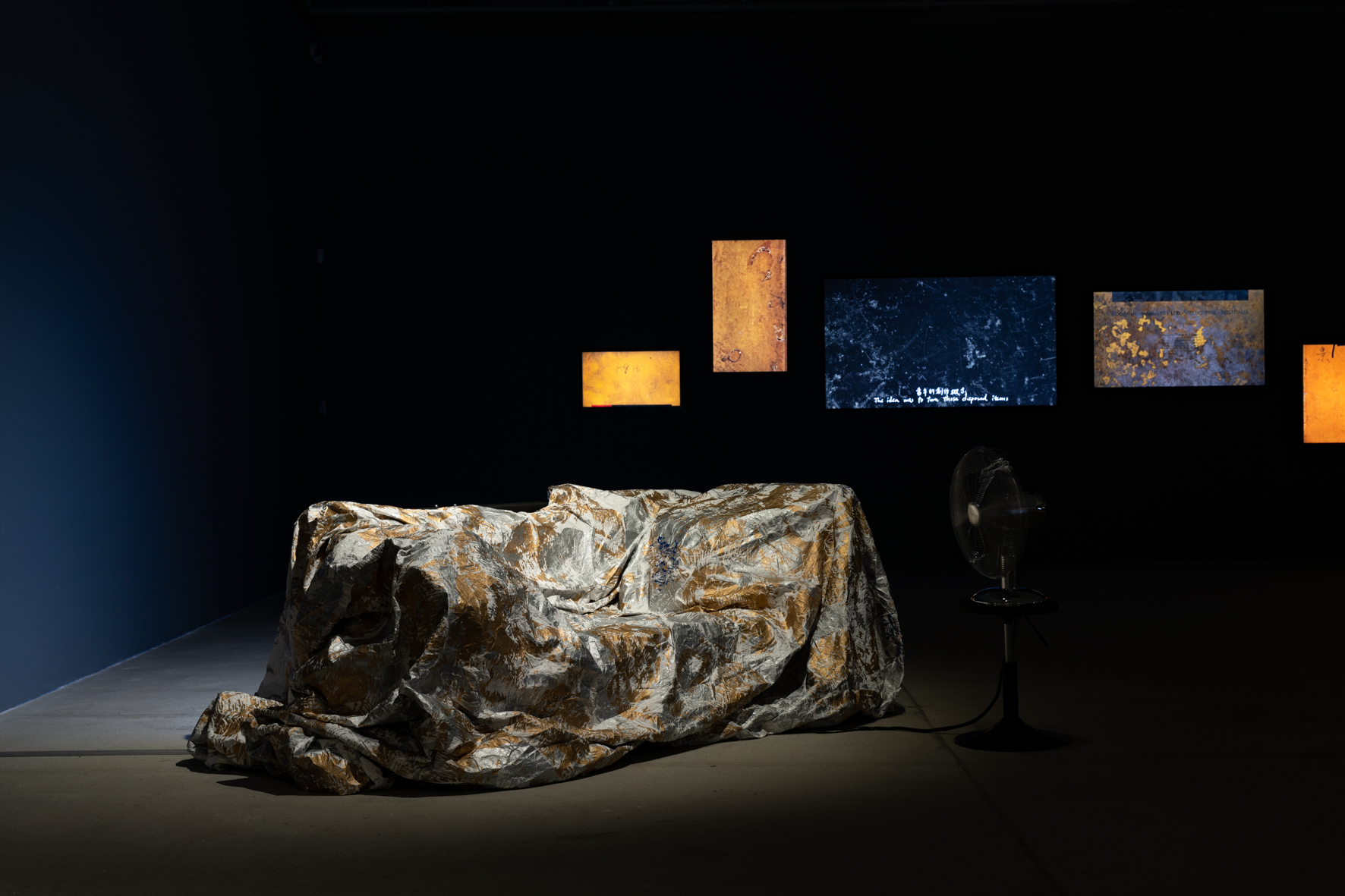
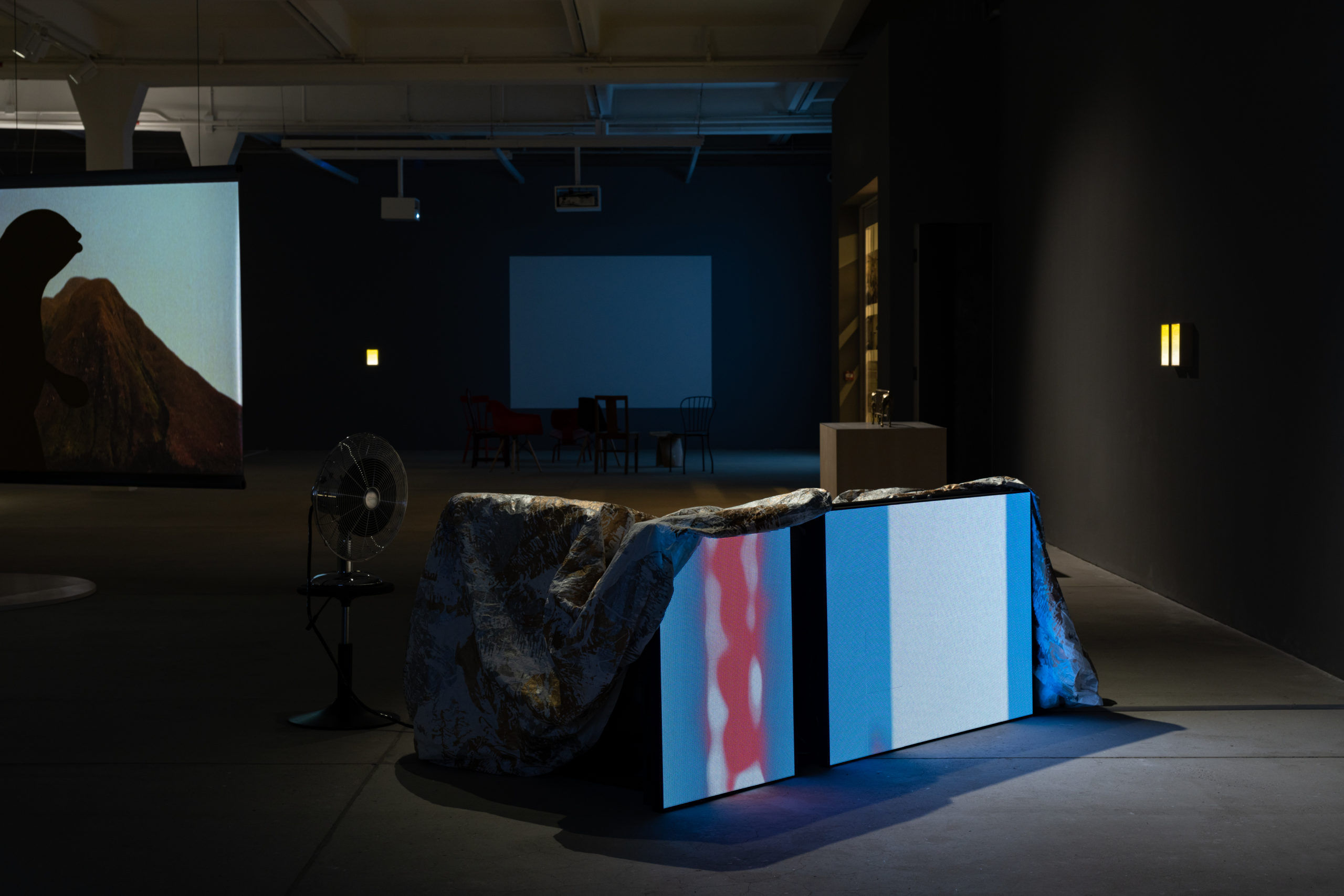
Installation views of Portals, Stories, and Other Journeys, Tai Kwun Contemporary, 2021. Photos: Kwan Sheung Chi.
《咫尺之內,開始之前:隨意門及其他足跡》展覽現場,大館當代美術館,2021年。關尚智攝。
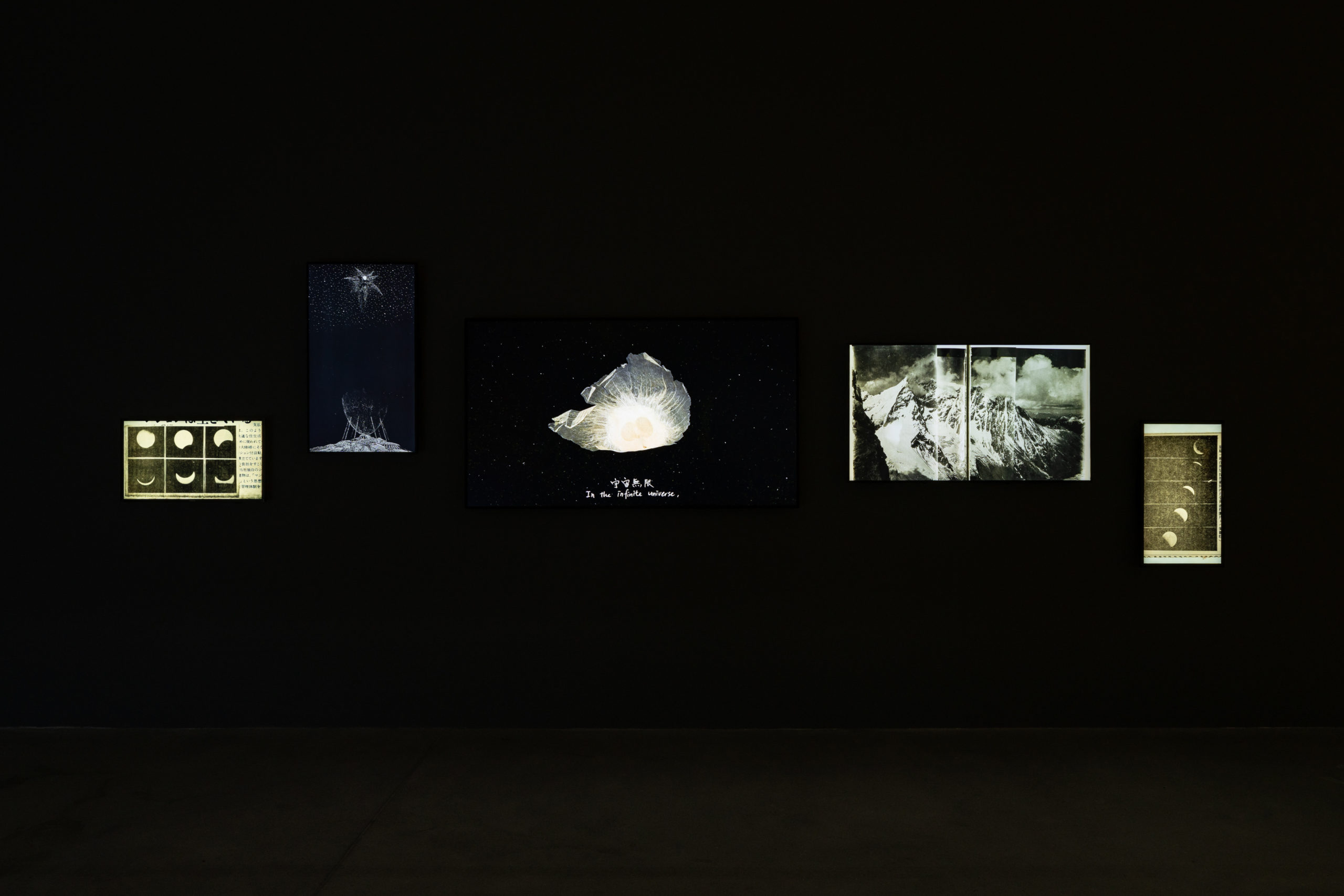
Lam Wing Sze, Thinking Studio, 2020. Installation view of Portals, Stories, and Other Journeys, Tai Kwun Contemporary, 2021. Photo: Kwan Sheung Chi.
林穎詩,《思考工作室》,2020年。於《咫尺之內,開始之前:隨意門及其他足跡》展覽現場,大館當代美術館,2021年。關尚智攝。
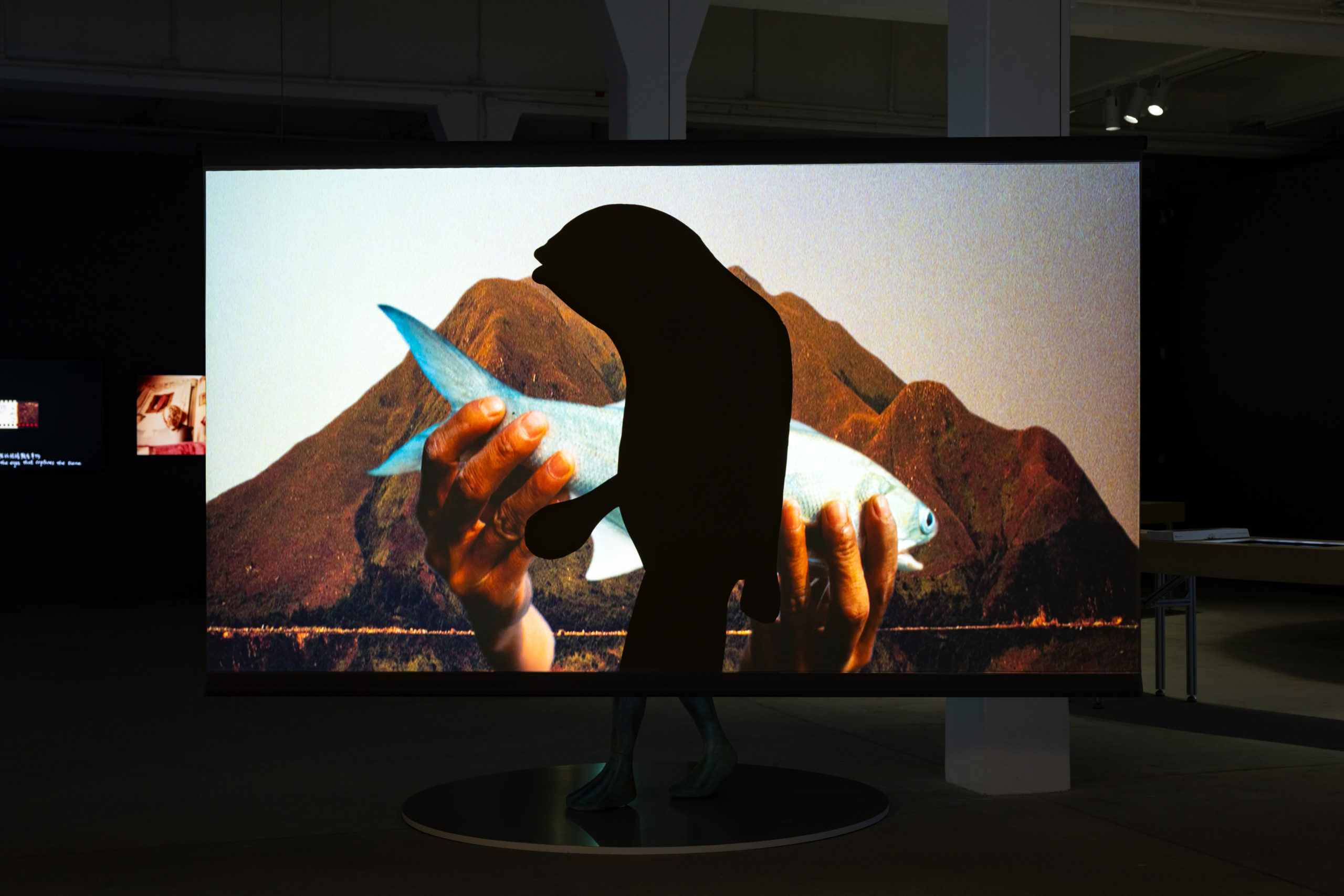
A Shadow Play, installation view of Portals, Stories, and Other Journeys, Tai Kwun Contemporary, 2021. Photo: Kwan Sheung Chi.
《影子戲》,《咫尺之內,開始之前:隨意門及其他足跡》展覽現場,大館當代美術館,2021年。關尚智攝。
CREDITS
Images courtesy of Asia Art Archive.
Click here to access the press release.
Click here to access the guidebook.
Portals, Stories, and Other Journeys is on show Tai Kwun Contemporary, JC Contemporary | 賽馬會藝方 大館當代美術館, Hong Kong from 23 April – 1 August, 2021. It is presented by Asia Art Archive and curated by Michelle Wong.
Participating artists:
Banu Cennetoğlu
Kwan Sheung Chi
Lam Wing Sze
Raqs Media Collective
Walid Raad
